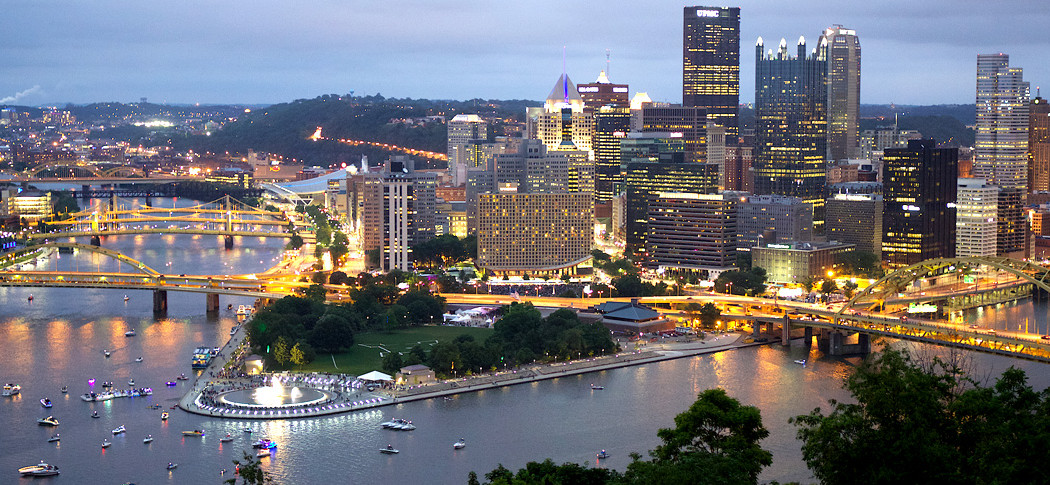Pittsburgh, Pennsylvania and Boston, Massachusetts both largely abandoned their waterfronts in the wake of deindustrialization.
The three rivers converging just on the outskirts of downtown Pittsburgh once powered mills and factories along their banks. In Boston, the pier-lined Harbor provided deep water access to adjacent manufacturing plants and warehouses. With the decline of industry in the latter half of the 20th century, development shifted downtown. In both cities commerce moved away from the waterfront, which had been heavily contaminated by decades of manufacturing.
Another unsuspected parallel between the cities: In 1991, task forces came together in each city to revitalize their respective waterfronts. In Pittsburgh, the Friends of the Waterfront (reincorporated as “Riverlife” in 2008) advocated for riverfront development that would create new linkages for pedestrians and bicyclists who wanted direct access to the rivers, as detailed in a recent What Works Case Study. Meanwhile, The Boston Harbor Association (TBHA) focused more explicitly on cleaning up what had become known as one of the dirtiest harbors in the country.
Plans for both efforts were ambitious. Large highways, railroad tracks, parking lots and other infrastructure created physical barriers between the cities’ neighborhoods and the waterfront. Master plans were created for each district to realize each of their goals: improvements to a 13-mile stretch of waterfront in Pittsburgh and a 47-mile stretch along Boston Harbor.
Each waterfront district had a number of catalytic projects that moved waterfront revitalization forward.
Both waterfront redevelopment efforts have also benefited from continuity of leadership.

